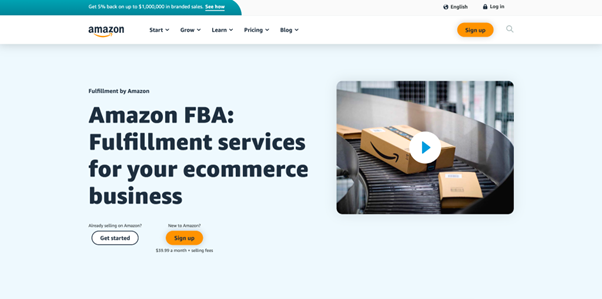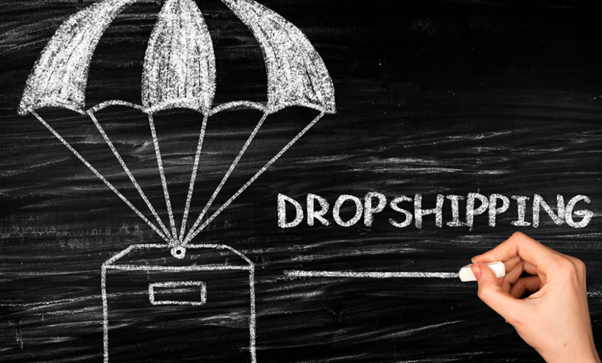Dropshipping and Amazon FBA are two of the most popular e-commerce business models, but which is better? It really depends on what your goals are as an entrepreneur. Both offer unique advantages and disadvantages, so it’s important to understand how they differ before making a decision.
In this article, we’ll compare each model in terms of product selection, storage space requirements, shipping costs, customer service needs, and other factors to help you decide which one is best for you.
Product Selection
When it comes to product selection, drop shipping has the advantage of a virtually limitless catalog of items that can be sold online. With Amazon FBA, you will be limited to products approved by Amazon and only those stored in their warehouse.
This means that if a customer requests an item not stocked by Amazon, your business cannot provide it using FBA services. Dropshipping gives you more flexibility when choosing what products to sell but also requires more research on each generation source so that you know where they are sourcing their inventory from.
Storage Space Requirements
When it comes to storage space needs, drop shipping has the advantage that you don’t need to keep any inventory on hand. You simply arrange for orders to be shipped directly from your supplier’s warehouse to your customer. This eliminates the need for expensive warehouses and can help keep your overhead costs low.
However, with Amazon FBA, you will need to store your products in Amazon’s warehouses. This means that there will be an upfront cost associated with stocking and maintaining inventory. Additionally, there may be additional fees if you exceed a certain amount of space or want additional features such as storage optimization or temperature-controlled storage options.
When it comes to storage space requirements, Amazon FBA is often more costly than drop shipping but it does come with some benefits, such as faster delivery times and better customer service since Amazon handles all of the fulfillment for you.
Shipping Costs
When it comes to e-commerce businesses, both dropshipping and Amazon FBA have their advantages and disadvantages.One of the biggest factors in deciding which model is best for you is shipping costs. With drop shipping, you don’t need to keep any inventory on hand, but there are still associated costs with arranging for orders to be shipped directly from your supplier’s warehouse to your customer.
On the other hand, Amazon FBA requires an upfront cost associated with stocking and maintaining inventory as well as potential additional fees if you exceed a certain amount of space or want additional features such as storage optimization or temperature-controlled storage options.
However, this does come with benefits, such as faster delivery times and better customer service since Amazon handles all of the fulfillment for you.
Customer Service Needs
No matter which e-commerce business model you choose, customer service is essential to running a successful business. With drop shipping, you will be responsible for providing customer service and resolving any issues that arise. This can be challenging as you’ll need to find reliable and knowledgeable individuals to handle customer inquiries.
On the other hand, Amazon FBA offers better customer service since they are responsible for handling all aspects of order fulfillment and shipping. Customer inquiries are handled by Amazon’s experienced customer service team who are trained to provide efficient resolutions. Additionally, Amazon also offers buyer protection programs such as A-to-Z Guarantee, which helps protect customers from fraudulent sellers or lost packages.
Other Considerations
When deciding between dropshipping and Amazon FBA, it is also important to consider other factors such as your budget, product selection, and scalability.
Scalability
Dropshipping is a great option for businesses that are just starting out and looking to test the market with a small inventory. It gives you the flexibility to add or remove products from your store at any time with minimal overhead costs.
However, once your business grows, keeping up with dropshipping orders can become difficult and expensive. Amazon FBA offers scalability since you can easily increase inventory levels as demand rises with minimal effort and cost.
Branding
With drop shipping, you are limited in terms of branding and customization options because you do not have control over how products are packaged and shipped. On the other hand, Amazon FBA allows you to customize packaging and shipping labels, and even create personalized product bundles, which can help create a stronger brand identity for your business.
Time Requirements
When using drop shipping services, you will need to spend more time researching suppliers, tracking orders, and dealing with customer service requests. It can take longer for customers to receive their order if they’re ordering directly from a supplier as opposed to Amazon’s warehouses which guarantee faster delivery times with their Prime membership program.
Returns/Refunds
When selling through drop shipping services, customers are often required to return an item directly to the supplier if they wish to get a refund or exchange instead of returning it back to your store, which adds complexity when resolving issues such as returns or refunds.
Meanwhile, Amazon FBA makes returns easy by offering free return shipping labels and providing buyers with quick refund processing times within 1-2 days after receiving their return package.
Conclusion
Choosing between Amazon FBA and dropshipping depends on your individual business needs. Dropshipping is great for businesses just starting out as it offers more flexibility with minimal overhead costs, while Amazon FBA allows you to scale up quickly and provide better customer service.





